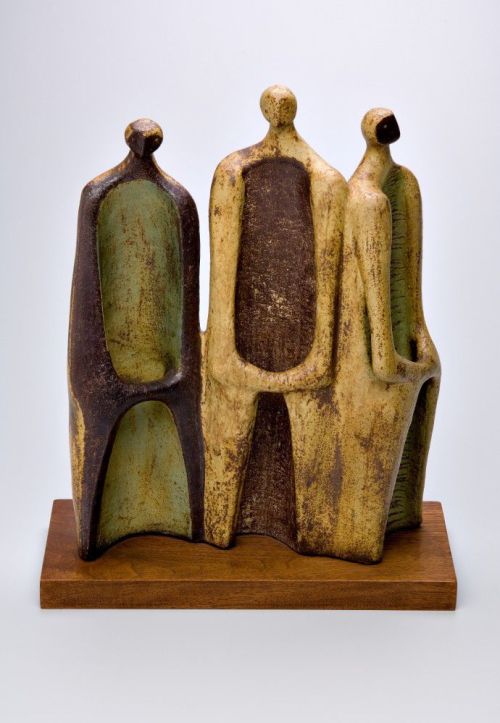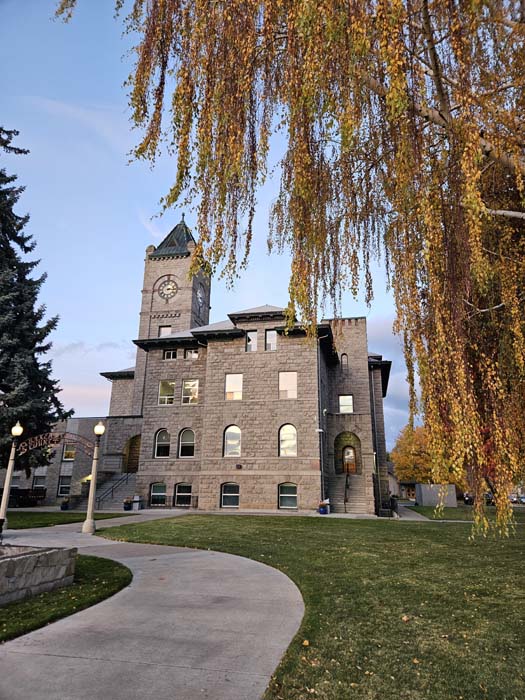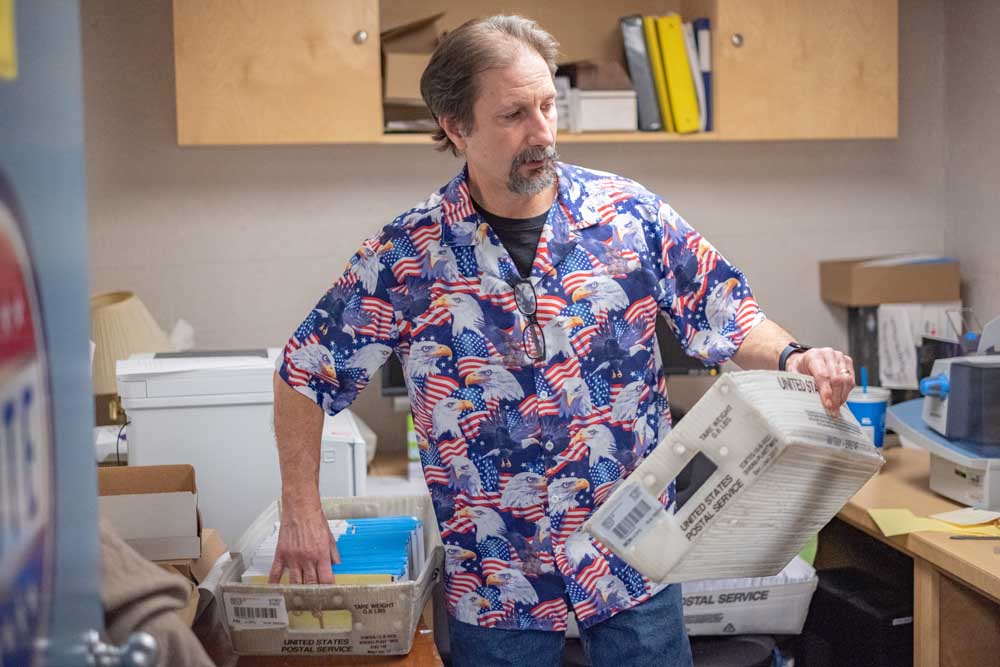Betty Feves life, work on display
Published 4:08 pm Sunday, March 11, 2012

- <p>Three Figures No. 4, 1955; stoneware; 18 x 12 x 6 inches; Oregon Ceramic Studio purchase, 1998.55.02.</p>
Namita Wiggers joy resonated across the airwaves. The curator of Portlands Museum of Contemporary Craft stood in the front yard in Pendleton last week, talking by phone with Dave Miller, host of Oregon Public Broadcastings Think Out Loud. Wiggers had free reign to wander through a home containing the artwork and relics of pioneer ceramics artist Betty Feves.
The curator was a kid in a candy store, cataloguing sculptures and other relics of Feves career for a retrospective on the artists life and work starting May 15 at the museum.
Though Feves died 27 years ago and her son Alan now owns the house at 304 N.W. Furnish Ave., the artist was present everywhere as Wiggers combed and catalogued.
Im standing in the yard where there are some fantastic sculptures, she said. One in particular that is going to be the first piece people see when they come into the museum.
Later by phone to the East Oregonian, Wiggers described the sculpture, Garden Wall, as a piece based on Columbia Gorge rock formations. Art shippers would carefully pack up the 5-foot sculpture to join about 150 pieces in the exhibit that will remain at the museum until July 28.
Over her 40 years in Pendleton, Feves sculpted a reputation as an artist and musician who was spare with her words, preferring to talk with her hands by shaping clay or drawing a bow over violin strings.
She wasnt a chatterbox, said Loree McKenna, who performed in a string quartet with Feves. She was an observer. When she spoke, it was from careful observation.
Systematic searcher
Feves, who moved to Pendleton after marrying local physician Dr. Louis Feves, spent the first part of each day in her basement studio, working clay, mixing glazes and firing her work in an electric kiln. Alan remembers his mothers kiln heating up the house despite a large fan. Afternoons, she tutored violin students in her living room.
On weekends, she often ventured outdoors.
She got her inspiration from cliffs and rocks and plants, said Alan, who said his mother spent much of her girlhood on a wheat ranch near LaCrosse, Wash.
She dug her own clay, first mostly in the Deadman Pass area and, later, on Battle Mountain. While exploring Feves kiln room, Wiggers found glaze recipes and a set of geological survey maps she used to plan clay-gathering trips.
She was systematically going to locations with the types of mineral deposits she wanted, Wiggers said.
The Pendleton artist, who studied art and education at Washington State College, Columbia University and the St. Paul School of Art, established herself as a trendsetter, working with clay in new ways. Instead of crafting dishware or other functional art, she also created larger works and studied primitive techniques such as firing pots inside a bonfire.
Feves work drew wide notice. Her art has appeared in shows around the world, including the Brussels World Fair in 1958 and the International Exchange Exhibition in Geneva, Switzerland. The Museum of Contemporary Craft hosted her first exhibit in 1952.
Over the years, the Feves house became something of a monument to contemporary art. The house was toney and hip with a Frank Lloyd Wrightesque exterior and an interior packed with Bettys art. Brigit Farley, a Washington State University history professor, grew up in Pendleton and visited the Feves home often.
Looking back, it reminds me of a Manhattan gallery transplanted in the rural west, Farley said. They brought Gotham sophistication to Pendletonauthentic high culture.
Wiggers, who visited the house several times, reveled in the ambiance, settling for the next best thing to chatting with the artist in person.
She is somebody who had a huge impact, not only on Oregon, but also on the American craft movement across the country, she said. At the time she came to Pendleton, she really was the only working artist in the area. She dedicated herself to not only making her own work, but making sure the area was rich in culture.
Big in Pendleton
Feves footprint is huge in Pendleton. The art gallery at Blue Mountain Community College bears her name. She was a founding member of the Pendleton Arts Commission. Residents can view her artwork in various locations around town, including the Bank of America lobby, St. Anthony Hospital, BMCC, the Pendleton Center for the Arts and West Hills Elementary School.
Music also held sway over Feves life. She had her cadre of violin students and, as a member of the Pendleton School Board, urged board members to consider the Suzuki method of teaching stringed instruments. The method, which involves immersion and memorizing by rote, was popular in Japan, but wasnt yet the rage in the U.S. After getting the go ahead, Feves flew to Japan to visit with Suzuki representatives. The result was Suzukis first American pilot program in Pendleton.
Her four children all inherited their mothers intense love of music. Michael is a cellist with Hollands national orchestra. Julie plays bassoon with the Long Beach Symphony. Alan plays bass and resonator guitar with several local jazz and bluegrass groups. Angene performed ballet and renaissance dance. None, however, chose graphic art.
Those were big shoes to fill, Alan said.
Pendleton artist Lorie Baxter met Feves when both served on the Pendleton Arts Council. Their friendship deepened over glasses of peppermint tea in the Feves backyard and discussions of art technique. The conversations stopped when Feves died of abdominal cancer in 1985 at age 66. Baxter misses her friend.
She was patient, dedicated, disciplined and funny, Baxter said. She was an artist who pioneered the development of ceramics in the United States. I saw her as the power behind the development of the arts.
Feves son, Alan, is certain that his mother would shake off the tribute.
She didnt like the spotlight. She didnt like praise or accolades, he said. She just liked doing. It was the process she liked.
The exhibit is a team project between the Museum of Contemporary Craft and the Pacific Northwest College of Art. In conjunction with the retrospective is the creation of a 192-page book of images and essays.





